Top 15 Attractions on a Sightseeing Tour Munich
Planning a sightseeing tour Munich? Our guide highlights the top 15 attractions you shouldn’t miss. From the iconic Marienplatz, home to the Neues Rathaus (New City Hall) with its famous glockenspiel, to the serene Englischer Garten, find out what makes these spots essential for any visitor.
Key Takeaways for our guided sightseeing Tour of Munich
-
Marienplatz, with its Gothic Revival Neues Rathaus and vibrant atmosphere, is the historical heart of Munich and a top tourist attraction, especially during the festive season.
-
The Munich Residenz and Nymphenburg Palace offer insight into the opulent lifestyle of Bavarian royalty, showcasing exquisite architecture and extensive collections of royal artifacts. T he Munich Residenz also features the Court Church of All Saints (Allerheiligen-Hofkirche), known for its architectural significance and role in hosting various performances.
-
The Englischer Garten and Olympic Park provide expansive green spaces for recreation, while attractions like the Deutsches Museum and Kunstareal District art museums highlight Munich’s cultural and educational offerings.
Marienplatz and Neues Rathaus (New Town Hall)
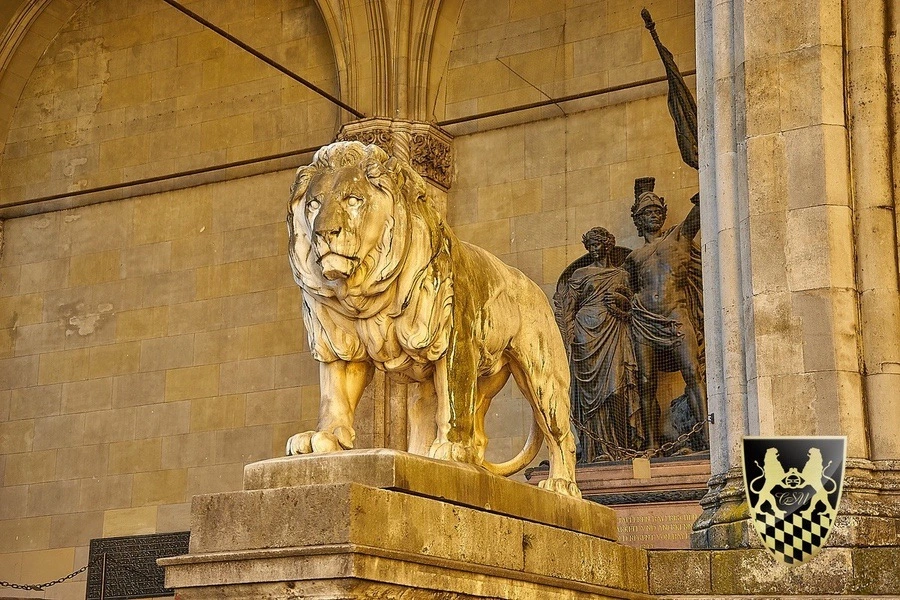
In the pulsing core of Munich, Marienplatz stands as a historic centerpiece since 1158 and continues to be one of the city’s liveliest zones. It is encircled by majestic edifices, including the city hall, and teems with life — an ideal launchpad for delving into Munich’s old town charms. The energy of this square is amplified by street entertainers, local merchants, alongside a mix of shops and cafés that embellish its borders.
The New Town Hall (Neues Rathaus), an exquisite example of Gothic Revival architecture completed in 1892, towers over Marienplatz. Serving as both municipal headquarters and key tourist attraction in Munich, the new city hall boasts the Glockenspiel, a captivating tower spectacle featuring moving figures that enact Bavarian historical scenes daily amidst chimes from its 43 bells. Those seeking panoramic vistas across the city should not miss ascending via elevator to the Neues Rathaus’ observation deck.
As winter approaches, Marienplatz has seasonal splendor for its iconic Christmas Market – casting itself as an enchanting holiday hub within the town. This market offers visitors a chance to savor mulled wine while perusing booths brimming with artisanal crafts under twinkling lights all contributing to festive merriment against backdrop rich with tradition and architectural magnificence. Truly cementing Marienplatz along with Neues Rathaus at their heart a focal experience when visiting Munich.
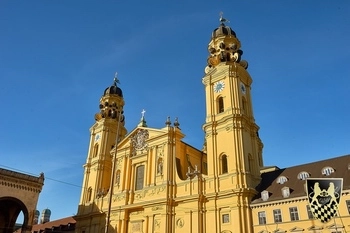
What does our service with private drivers have to offer you:
Travel around Munich’s premier sights effortlessly with the aid of our personal driver service, featuring luxury vehicles. Comfort and luxury are a given as you journey in our deluxe vehicles, which range from sedans to mini-vans, designed to accommodate small groups or parties of up to 16 individuals. Our fleet boasts high-end brands including Mercedes-Benz, BMW, and Audi each car selected for its sophisticated appearance and ability to enhance your touring experience.
Our drivers who hail from Munich are true connoisseurs of their hometown, combining the roles of expert chauffeurs and informed tour guides. They’re eager to share their extensive knowledge while ensuring expedited access at sought-after locations such as Nymphenburg Palace, Neuschwanstein Castle, and Linderhof Palace.
Choose our personal driving service for an unhindered exploration of Munich’s enchanting landscape without the complications associated with public transportation systems.
Englischer Garten (English Garden)
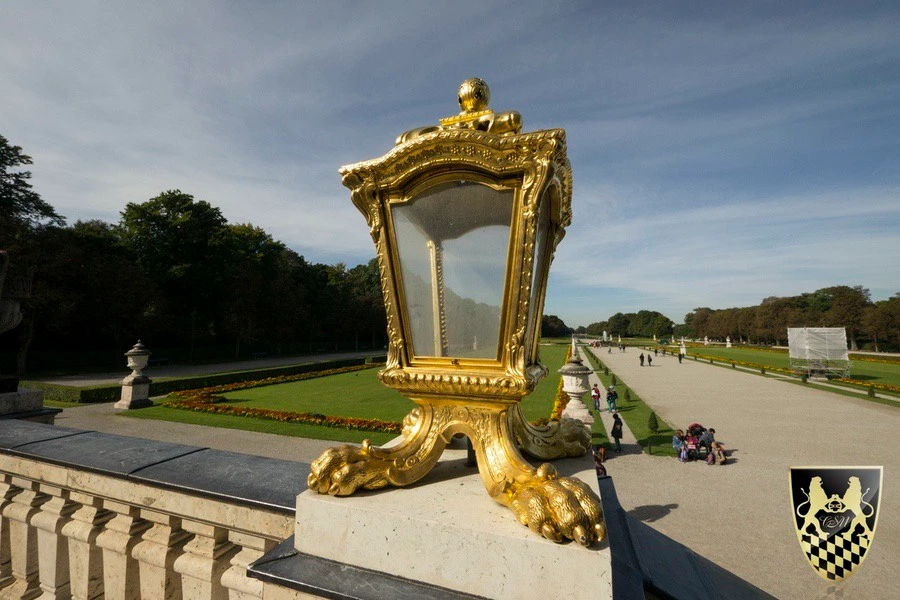
Covering an expansive 910 acres, t he Englischer Garten in Munich is not just the largest park in the city, but also ranks among the biggest urban parks globally. This urban oasis serves as a peaceful haven from urban activity and features an array of attractions and recreational options. Notably, visitors can witness surfers skillfully maneuvering on the Eisbach wave a constant wave on the river Eisbach at any time of year.
Within this extensive garden lies another gem: The Japanese Tea House. Inaugurated in 1972, it’s a spot where one can participate in traditional tea ceremonies offering quiet cultural immersion. Nestled within its grounds stands Munich’s favored Chinese Tower beer gardens an iconic structure soaring at 25 meters with pagoda-like architecture.
The Englischer Garten caters to diverse preferences whether you’re inclined towards leisurely walks or energetic runs or if your idea of enjoyment includes lounging while sipping beer amidst nature the park provides varied experiences for all who visit.
Nymphenburg Palace and Gardens
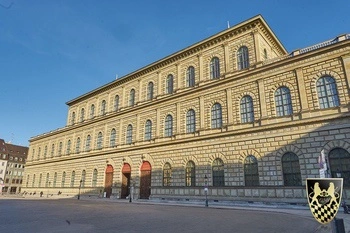
The Nymphenburg Palace, a splendid Baroque edifice and former royal residence, began its journey as a humble villa back in 1664 and expanded into an extensive royal abode. Its vast gardens stretch across 180 hectares and were initially crafted following the formal Baroque fashion but eventually received an English landscape makeover by Friedrich Ludwig von Sckell during the 19th century. This transformation stands as evidence of European garden design’s evolving preferences throughout history.
Set within these palace grounds are several noteworthy structures that attract visitors’ attention, such as the Amalienburg a hunting lodge celebrated for its ornate Rococo architecture and its acclaimed Hall of Mirrors. Equally intriguing is the Badenburg, where one can marvel at what was once considered groundbreaking: the earliest heated indoor swimming facility.
Within this palatial complex lies also the Marstallmuseum, which boasts a remarkable exhibit showcasing regal conveyances like carriages and sleighs alongside visitor access to admire the Palace Chapel adorned with striking ceiling artwork representing Mary Magdalene’s life narrative.
Venturing through Nymphenburg Palace along with its elaborate gardens immerses you in Bavarian royalty’s extravagance and serves as a majestic record of artistic and structural splendor from days long passed. A trip here offers more than just sights. It provides passage through time to witness gracefulness and luxury redefined.
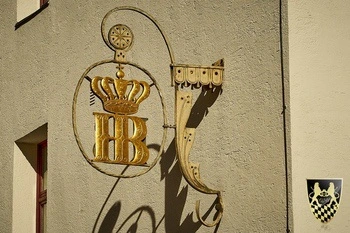
Munich Residenz
Situated in Munich, the Residenz served as the central hub of power for Bavaria’s dukes, electors, and monarchs. It is celebrated as a significant architectural marvel that encapsulates Munich’s extensive historical narrative. As Germany’s most expansive urban palace, it houses an impressive array of more than 150 chambers adorned with centuries-spanning art collections, furnishings, and ornamental pieces that narrate the illustrious tale of the Wittelsbach family’s authority and splendor.
The sprawling complex features noteworthy sections such as Königsbau, Alte Residenz, and Festsaalbau – each illustrating different timeframes and architectural styles. The treasury within presents an enchanting spectacle with its collection nearing 1,500 royal items including shimmering jewels and priceless relics. Visitors are drawn to both the Baroque Imperial Hall & the Rococo-styled Rich Rooms, which exemplify lavish craftsmanship reflective of their era.
For those interested in delving deeper into Bavarian royalty’s lifestyle throughout history, you can peruse through the Marstallmuseum where over forty regal carriages & sleighs are on display. These were once used by members of the Wittelsbach lineage themselves. To this rich indoor experience lie tranquil courtyards along with arcades at one’s disposal offering moments for contemplation amidst this grandiose testament to times past within Munich city limits. Visiting here offers an entrancing escapade right into Bavaria’s very essence spanning generations.
Olympic Park
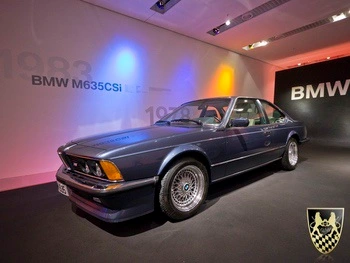
The Olympic Park, covering an area of 85 hectares, was built for the Summer Olympics in 1972 and has become a quintessential feature of contemporary Munich. The park is distinguished by its undulating hills and vast expanses of greenery, offering diverse options for leisure activities. Those who visit can engage in rowing on the Olympic Lake, running along picturesque paths or sledding down Olympiaberg when it’s winter.
An architectural highlight within the park is the Olympic Stadium with its distinctive tent-like roof crafted by Frei Otto. Accompanying this landmark is the impressive Olympic Tower, which measures 291.28 meters high – both structures significantly contribute to defining the skyline of the park. With a variety of major events such as concerts and festivals held here regularly, this venue remains an integral part of Munich’s vibrant cultural life.
As a celebration of Munich’s commitment to innovation, visiting Olympic Park offers unique experiences particularly appealing to sports enthusiasts and aficionados of architecture.
BMW Welt and Museum
The BMW. Welt transcends the traditional concept of a showroom, emerging as a contemporary platform that exhibits not only BMW’s most recent cars but also their advanced mobility visions. Since its inauguration in 2007, this striking edifice has captured attention by granting free access and crafting an enveloping experience suitable for both car aficionados and general tourists. Its modernistic design augments the attraction for those visiting Munich, cementing its status as a favored local landmark.
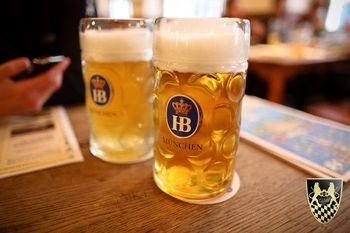
In close proximity lies the BMW Museum, which offers an array of both constant and temporary displays that provide insight into the esteemed narrative and progression of the marque. The museum invites guests to discover an extensive selection of vehicles encompassing sportscars, competition automobiles, and motorbikes. It provides a deep dive into both current automobile engineering techniques and potential future driving forces – presenting visitors with an intricate view on vehicular innovation over time.
Complementing traditional automotive showcases are diverse happenings such as prize-giving festivities or yoga classes hosted at BMW Welt. These events infuse cultural vitality into one’s visit there. Interactive consultations offer attendees hands-on exposure to BMW’s latest in-car technologies—affirming that both venues constitute essential stops for those captivated by automotives’ intersection with technology advancements and automotive innovation.
Viktualienmarkt
Situated in the heart of Munich’s old town, the Viktualienmarkt is a renowned farmers market bursting with life. This marketplace hosts approximately 100 booths that cater to food enthusiasts by providing an extensive range of culinary delights such as organic produce, savory meats, and authentic regional specialties. Open from Monday to Saturday each week, it presents visitors with a unique opportunity to delve into the essence of local culture and gastronomy.
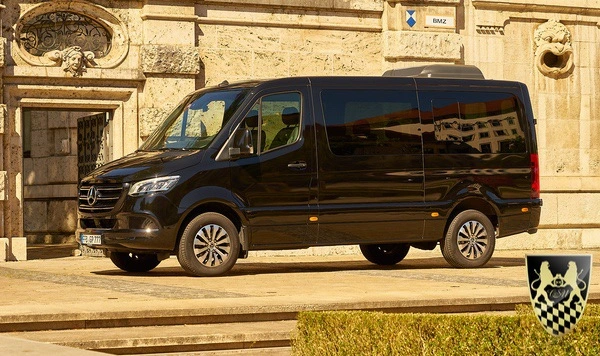
At its core sits an iconic maypole that serves as a representation of various Bavarian trades — a nod to the area’s vibrant cultural heritage. With its energetic environment steeped in rich historical significance alongside a plethora of shopping choices, Viktualienmarkt stands out as an essential stop for anyone touring through Munich.
Viktualienmarkt beckons not just those eager to indulge in traditional cuisine, but also individuals yearning for immersion within the dynamic atmosphere indicative of this historic part of town. It offers something captivating for every visitor who steps foot into this lively enclave within Munich.
Tierpark Hellabrunn (Hellabrunn Zoo)
Covering an expanse of 89 acres, the Hellabrunn Zoo or Tierpark Hellabrunn is celebrated for its unique layout that clusters animals by their geographic origin. This arrangement fosters a more authentic and engaging atmosphere for guests as they observe wildlife within habitats that are designed to replicate their natural environments closely. The variety of species housed at the zoo, along with its well-maintained facilities, positions it as a favored spot among both family groups and enthusiasts of wildlife.
A remarkable aspect of the zoo is its expansive free-flight aviary which permits visitors to marvel at various bird species gliding freely above in an open environment.
With initiatives geared towards wildlife conservation and educational outreach coupled with its picturesque locale adjacent to the Isar River, Hellabrunn Zoo stands out as an informative yet delightful haven suited for people from every generation.
Munich's Christmas Markets
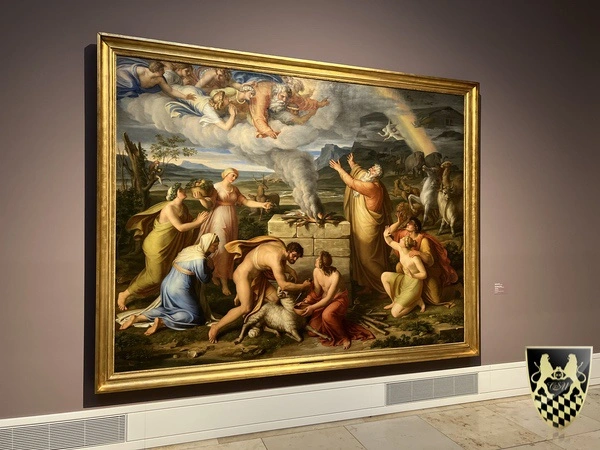
The Christmas markets of Munich offer an enchanting journey filled with a festive atmosphere, age-old customs, and holiday merriment. Set in the historic heart of Munich, Marienplatz is home to a storied Christmas market that has brought festive joy since the 14th century. This venerable marketplace brims with stalls featuring artisanal crafts, seasonal ornaments, and culinary delights while standing in the shadow of the grand Neues Rathaus – creating a captivating scene central to celebrating Yuletide. Visitors can also experience the charm of the Middle Ages, with artisans dressed in period costumes demonstrating and selling authentic goods.
For those seeking even more Yuletide charm, make your way to the Residenz’s Christmas Village. There you’ll have the opportunity to observe skilled craftsmen at their trades, savor freshly-made warm delicacies from local bakers and delight in theatrical performances catered toward young audiences. The range of experiences provided here promises memorable moments for guests young and old alike.
Across all these festive congregations in Munich’s crisp winter air, patrons are invited to revel in time-honored Bavarian festivities by sipping on mulled wine or nibbling roasted chestnuts. These gatherings embody centuries of regional holiday practices, ensuring visitors leave imbued with warmth and jubilation throughout this chilly season.
Kunstareal District Art Museums
Connoisseurs of the arts will be delighted to discover Munich’s Kunstareal District, a hub brimming with some of the most esteemed art museums in the city, showcasing its rich artistic heritage. As a nexus for culture, it houses institutions such as the Alte Pinakothek, one of the world’s earliest-established galleries that is replete with European paintings from iconic figures like Dürer and Rembrandt. Venturing through this gallery is akin to traversing Europe’s artistic evolution.
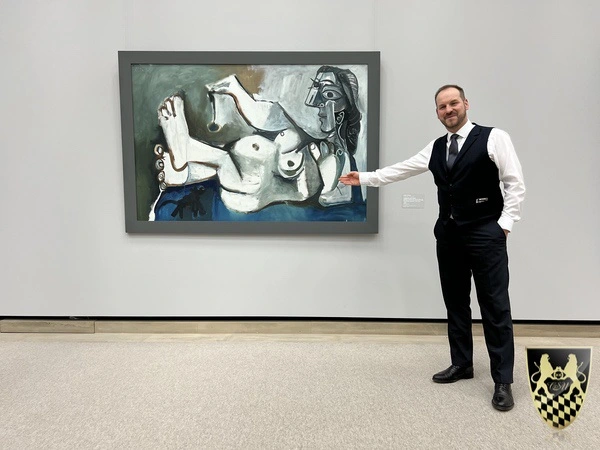
In parallel, your exploration can extend into later epochs at The Neue Pinakothek where works spanning from the late 18th century up until early 20th-century modernism are displayed. This museum showcases seminal artworks by luminaries including Van Gogh and Monet. Together these two renowned establishments provide visitors with an encapsulated walk across multiple eras in art history.
Nestled within this district are sites such as the Lenbachhaus which boasts an expansive collection focused on pieces born out of Blue Rider movement enthusiasm and the Museum Brandhorst that features striking contemporary collections highlighted by more than one hundred creations attributed to Andy Warhol. Complemented. By treasures found at both Glyptothek and State Antiquities Collection illuminating ancient sculptural artifacts alongside Greek relics. The richly adorned Kunstareal District stands out as a destination not just for those who cherish fine arts but also for individuals seeking immersion in historical perspectives—all making it indispensable amongst Munich’s array of attractions worthy of admiration.
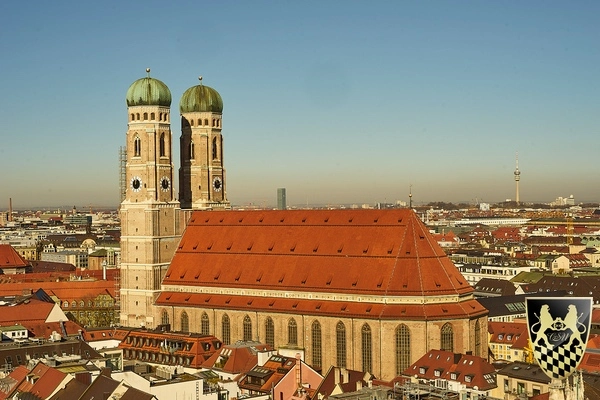
Peterskirche (St. Peter's Church)
St. Peter’s Church, also known as Peterskirche, holds the distinction of being Munich’s most ancient church with its origins dating back to the 12th century, showcasing remarkable medieval architecture. The edifice embodies a Gothic architectural style and serves as an emblem of Munich’s historical roots in medieval times. At the center of attraction is its high altar, which captivates onlookers through ornate representations including statuettes of St. Peter and the Four Fathers of Latin Christianity.
A standout activity for visitors at Peterskirche includes climbing up to “Old Peter,” which locals affectionately call the church’s southern tower. By navigating a winding staircase, they reach vantage points that provide sweeping views across Munich—a splendid sight revealing the breadth and beauty inherent in this urban panorama. As an enduring bastion of faith and tradition within Munich, St. Peter’s Church continually welcomes parishioners for regular religious services along with playing host to assorted cultural events over different seasons each year.
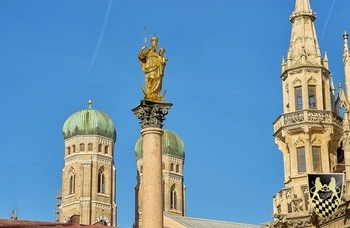
Hofgarten
The tranquil Hofgarten, a historical garden established from 1613 to 1617, serves as a picturesque garden oasis in the center of Munich. Initially envisioned as an exclusive court garden for the neighboring Munich Residenz, it became accessible to all in 1780. Strolling through its walkways offers respite amid vibrant floral arrangements and soothing fountains.
World War II brought destruction upon this idyllic space, yet subsequent restoration efforts have carefully integrated its historical Italian Renaissance character with additional styles that emerged later on. Now home to shadowy colonnades, a poignant memorial dedicated to fallen World War I servicemen from Munich stands among the attractions within this reconstructed realm along with a central pavilion host to occasional musical performances. Remaining a cherished haven for relaxation or contemplation today, visitors can appreciate the enduring charm of the Hofgarten at their own unhurried pace.
Deutsches Museum
Situated on Museumsinsel, the Deutsches Museum holds the title of the largest science and technology museum in the world. This German museum is a magnet for millions of curious minds every year, with its vast array of interactive exhibits and over 28,000 objects spread across an impressive number of scientific and technological domains.

The facility offers visitors an immersive experience through hands-on exhibits that span from conducting liquid nitrogen experiments to extracting DNA. The technology museum is designed to be interactive and educational for individuals of all ages, including younger guests who can enjoy areas like Kids’ Kingdom specifically tailored for children between three to eight years old. With extensive departments such as its aviation wing among others, one could easily spend multiple days exploring the wonders encapsulated within these scientific displays.
Anyone with a keen interest in how scientific breakthroughs have transformed our planet will find visiting the Deutsches Museum both enlightening and inspiring. Its rich collections not only foster education but also highlight innovation across various fields, ensuring that upon departure visitors are more informed about—and have gained greater appreciation for—the expansive realm of science and technology.
Asamkirche (Asam Church)
Constructed in 1746, the Asamkirche is a breathtaking example of Rococo architecture located in Munich. This church served as the personal place of worship for the renowned Asam siblings, who were celebrated both for their artistic talents and architectural expertise. The layout within reveals a symbolic tri-level journey that represents an ascent from earthly anguish to celestial radiance.
Among its most striking elements is the high altar at Asamkirche, which is framed by four spiraling columns that amplify its lavish Rococo aesthetic. A testament to baroque craftsmanship can be seen in the intricate wrought-iron grille fashioned in 1776. The meticulous attention to detail and supreme artistry found here renders Asamkirche not only an enthralling destination for those visiting, but also stands as a lasting homage to the creative genius of the Asam brothers.
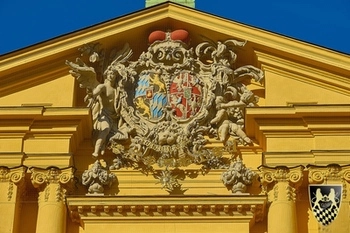
Frauenkirche
The Cathedral of Our Dear Lady, better known as the Frauenkirche and completed in 1488, stands as a significant symbol of Munich. Its two towering structures rise to a height of 100 meters, commanding the city’s skyline with visibility extending for miles. These prominent towers bear the names Stasi and Blasi, christened after winning titles from a public contest conducted in the 1950s and have since become emblematic features of this spiritual edifice. Among its many tales is that of The Devil’s Footprint—a mysterious footprint-shaped impression found near its entrance, which legend claims was created by Satan himself. This fascinating piece of folklore enhances the aura surrounding the cathedral while drawing numerous visitors intrigued by such stories.
Offering an awe-inspiring panoramic perspective over Munich is another attribute when one ascends to these twin peaks. For those who venture up there, they are rewarded with expansive vistas reaching across and beyond urban expanses—making it an exceptional point from which to take in views around them. Due to its historical value combined with architectural magnificence and the panoramic views it provides, visiting the Frauenkirche remains an essential experience for anyone touring through Munich.
Hofbräuhaus am Platzl
The Hofbräuhaus am Platzl is a world-famous beer hall located in the heart of Munich, Germany. It is one of the most iconic and popular tourist destinations in the city, attracting millions of visitors every year. The beer hall is situated in the old town, near the Marienplatz and the New Town Hall. The Hofbräuhaus am Platzl has a rich history dating back to 1589, when it was founded by Duke Wilhelm V of Bavaria. The beer hall was originally built as a brewery for the royal family, but it soon became a popular gathering place for Munich residents and travelers. Over the centuries, the Hofbräuhaus am Platzl has hosted many famous guests, including King Ludwig I of Bavaria and the composer Richard Wagner.
Today, the Hofbräuhaus am Platzl is a must-visit destination for anyone interested in German culture and beer. The beer hall offers a wide range of traditional German beers, including the famous Hofbräu Original, as well as delicious Bavarian cuisine. Visitors can enjoy live music and traditional German folk dancing, and even take a tour of the brewery to learn more about the beer-making process. One of the most popular attractions at the Hofbräuhaus am Platzl is the traditional German beer garden, where visitors can enjoy a cold beer and a plate of sausages or schnitzel in a lively and festive atmosphere. The beer garden is surrounded by magnificent buildings, including the New Town Hall and the Church of St. Peter, and offers stunning views of the city.
In addition to its beer and food, the Hofbräuhaus am Platzl is also famous for its traditional German Christmas market, which takes place every year in December. The market offers a wide range of festive goods, including handmade crafts, decorations, and souvenirs, as well as traditional German food and drink. Visitors to the Hofbräuhaus am Platzl can also take a walking tour of the surrounding area, which includes many of Munich’s most famous landmarks, such as the Marienplatz, the New Town Hall, and the Church of St. Peter. The tour offers a unique glimpse into the history and culture of Munich, and provides a great opportunity to learn more about the city and its people. For those interested in science and technology, the Deutsches Museum is located just a short walk from the Hofbräuhaus am Platzl. The museum is one of the largest and most comprehensive science and technology museums in the world, and offers a wide range of exhibits and interactive displays.
In the evening, visitors to the Hofbräuhaus am Platzl can enjoy live music and traditional German folk dancing, and even take a horse-drawn carriage ride through the streets of Munich. The beer hall is also a popular destination for special events and celebrations, such as weddings and birthday parties. Overall, the Hofbräuhaus am Platzl is a must-visit destination for anyone interested in German culture and beer. Its rich history, traditional German cuisine, and lively atmosphere make it a unique and unforgettable experience that is not to be missed.
Art and History
Munich is a city with a rich cultural heritage, and its art and historical sites are a testament to its fascinating past. The city is home to numerous galleries and historical museums that showcase its artistic and historical treasures. One of the most famous art museums in Munich is the Pinakothek der Moderne, which features an impressive collection of modern and contemporary art. The museum’s collection includes works by artists such as Picasso, Warhol, and Dalí, as well as an extensive collection of graphic design and architecture. This museum is a must-visit for anyone interested in the evolution of modern art and design.
Another must-visit art museum in Munich is the Alte Pinakothek, which features a vast collection of European art from the 14th to the 18th century. The museum’s collection includes works by artists such as Rembrandt, Rubens, and Dürer, as well as an impressive collection of medieval and Renaissance art. Walking through its halls is like taking a journey through the history of European art.
In addition to its art museums, Munich is also home to numerous historical museums that showcase the city’s rich history. The Deutsches Museum, for example, is one of the largest and most comprehensive science and technology museums in the world. The museum’s collection includes over 28,000 exhibits, including the first automobile, the first airplane, and the first computer. This German museum offers an immersive experience that is both educational and entertaining for visitors of all ages. The city’s historical museums also include the Munich City Museum, which tells the story of Munich’s history from the Middle Ages to the present day. The museum’s collection includes exhibits on the city’s medieval past, its role in the Thirty Years’ War, and its development into the modern city it is today. Exploring these museums provides a deeper understanding of Munich’s historical and cultural evolution.
Explore Munich’s rich art and historical sites, including galleries and historical museums.
Other Attractions
While Munich is famous for its beer gardens and Christmas markets, there are many other unique and lesser-known sites that add charm to the city’s vibrant cityscape. One such site is the Chinese Tower in the English Garden, which is a beautiful example of Chinese architecture in the heart of Munich. This iconic structure, surrounded by one of the city’s most beloved beer gardens, offers a delightful spot to relax and enjoy a traditional Bavarian brew. Another unique site is King Ludwig’s Castle, which is a beautiful example of medieval architecture. The castle was built in the 19th century and features stunning Gothic Revival architecture. It stands as a testament to the romantic vision of King Ludwig II and offers visitors a glimpse into the opulent world of Bavarian royalty.
For those interested in history, the New Town Hall is a must-visit attraction. The building was constructed in the late 19th century and features stunning Gothic Revival architecture. The town hall is also home to the famous Glockenspiel, which chimes every hour and features life-size puppets reenacting scenes from medieval times. This spectacle is a highlight for many visitors and adds a touch of historical charm to the city center.
Munich is also home to numerous beautiful parks and gardens, including the English Garden, which is one of the largest urban parks in the world. The park features beautiful gardens, a lake, and a Japanese tea house, as well as plenty of walking and cycling trails. It’s a perfect place to unwind and enjoy the natural beauty of the city. For those interested in science and technology, the Deutsches Museum is a must-visit attraction. The museum features an impressive collection of scientific and technological exhibits, including the first automobile, the first airplane, and the first computer. This technology museum offers an interactive and educational experience that is sure to captivate visitors of all ages.
Finally, for those interested in history, the Court Church is a must-visit attraction. The church was built in the 19th century and features stunning Gothic Revival architecture. The church is also home to the tomb of King Ludwig II, who was the king of Bavaria from 1864 until his death in 1886. This historical site offers a serene and reflective space to appreciate the architectural beauty and historical significance of Munich. Overall, Munich is a city with a rich cultural heritage and a vibrant cityscape. From its art and historical sites to its unique and lesser-known attractions, there is something for everyone in this beautiful city.
Discover unique and lesser-known sites that add charm to Munich’s vibrant cityscape.
Summary
Munich is a city of contrasts, where historic splendor meets modern vibrancy. From the majestic Nymphenburg Palace and the historic Munich Residenz to the innovative BMW Welt and the expansive Englischer Garten, each attraction offers a unique glimpse into the city’s rich cultural tapestry. Whether you are exploring the bustling Marienplatz, marveling at the art in the Kunstareal District, or enjoying the festive cheer of the Christmas Markets, Munich promises an unforgettable experience. As we conclude our tour, we hope this guide has inspired you to discover the many wonders of Munich. Each attraction, with its distinct charm and historical significance, contributes to the city’s unique character. We invite you to explore these sites and immerse yourself in the beauty and history of Munich.
Frequently Asked Questions
What is the best time to visit Munich?
The best time to visit Munich is during the spring(April to June) and fall (September to October) when the pleasant weather and numerous festivals, such as Oktoberfest, take place. These periods offer an enjoyable experience for visitors.
How can I get around Munich efficiently?
Make use of Munich’s comprehensive public transport network, which includes the U-Bahn, S-Bahn, trams, and buses for effective movement around the city. For a travel experience that is more tailored to individual needs, consider hiring a personal driver service.
Are there any free attractions in Munich?
Certainly, Munich is a city abundant with complimentary attractions such as the Englischer Garten, the Viktualienmarkt, and the BMW Welt. On designated days, some museums invite visitors to enjoy their exhibits at no charge, offering an economical option for discovering the city’s cultural offerings.
What are the must-visit sites for art lovers in Munich?
Art lovers in Munich should explore the Kunstareal District, which features the Alte Pinakothek, Neue Pinakothek, Lenbachhaus, and Museum Brandhorst, among other significant sites.
These institutions collectively offer a rich experience of art history and contemporary creativity.
Can I visit the royal castles around Munich?
Yes, you can visit royal castles around Munich, including Nymphenburg, Neuschwanstein, and Linderhof, often through guided tours offered by private services.
